Remembering Claude Parent's unique take on modernist architecture
We look back on Claude Parent's slant on modernist architecture, five years after the iconic architect's passing, by revisiting Wallpaper* contributing editor Emma O'Kelly's meeting with him in 2007

Claude Parent is one of France's most revered modern architects, and in 2005 he was invited to become a member of the Academie des Beaux-Arts. For the inauguration ceremony, he had to dress up in an overblown white bow-tie, embroidered tails with more than an echo of Widow Twanky about them and carry a ninja-style sword that he himself designed. ‘You should have seen me,' he chuckles, ‘the costume was ridiculous, and I had to buy it!' The 204-year-old institution is France's most prestigious arts body and is full of composers, painters, sculptors and a sprinkling of architects, éminences grises all, but Parent stands out from his fellow professionals – Paul Andreu and Roger Taillibert among them – in that he dropped out of Paris's École des Beaux-Arts and so never qualified. Which may explain his unorthodox approach to buildings.
He started out in 1942, a time, he says, ‘that is not remembered for its enthusiasm for architecture', and during his long career, has hung out with all the ‘avant-gardists' of the day. He collaborated with Yves Klein on a series of paintings of a 'petite stripteaser' and the design of some fountains for the Palais de Chaillot in Paris, held a conference on a cliff in Folkestone, England, in 1966 with Peter Cook of anarcho British architects Archigram (‘To our surprise, everyone came!'), and completed a six-month stint at Le Corbusier's studio, something he found less than exciting. ‘He was very much the boss and it was a bit suffocating. But when he was there, you saw his genius, although he never made any money; his buildings took too long and were so expensive,' says Parent.
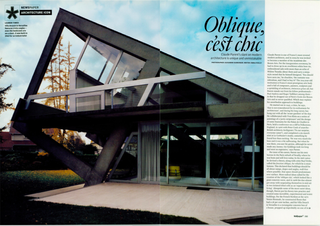
Opening spread with Villa Drusch from Wallpaper's 2007 article on Claude Parent
For most of his career, Parent ran his own bureau in the Paris suburb of Neuilly, where he was born and still lives today. In the mid-1960s he devised a theory, along with critic Paul Virilio, called the fonction oblique, for which he is most famous. This declared that buildings should be all about ramps, slopes and angles, wall-free where possible; that space should predominate over surface. More radical ideas called for the creation of the 'oblique city', which looked like a giant concrete wave, and in 1968 the duo almost got away with suspending themselves in mid-air in two isolated tilted cells as an ‘experiment in living'. Alongside some of the more outré ideas, though, Parent put his theory into practice and created some incredible, experimental and iconic buildings. For the French Pavilion at the 1970 Venice Biennale, he constructed floors that had a 28 per cent incline, and his Villa Drusch in Versailles is a rectangular concrete box of a house, propped up improbably on one of its corners.
Built in 1963 for local industrialist Gaston Drusch, it's all tricky angles and open spaces, and the outdoor lap pool, which Drusch used to jump into from his bedroom window, looks as contemporary as anything today. Says Parent: ‘This house was a lesson in space; it gives you views you couldn't have imagined on a maquette and the proportions are really good. But it was an ambitious project and everyone said that it was going to fall over.' How it ever got planning permission is anyone's guess, sitting as it does amid grand 19th-century villas and cosy suburban houses, but Parent says that by the time he designed it, he was well known enough to get it through. ‘Every house I've ever built [and there are around a dozen across France] has been refused planning permission,' he says, laughing.
A year after Villa Drusch, Parent embarked upon one of his most 'scandalous' buildings, the church of Sainte Bernadette du Banlay in the town of Nevers. With an exterior like a Nazi bunker and a near-empty interior except for a few pews and haphazard stained-glass windows, it's an imposing sight, but despite the love-it-or-loathe-it reactions it causes, it's a listed building. Which is more than can be said for his houses. ‘Only one of my houses is listed, and that's a good thing,' says Parent, ‘because then people are free to do what they like with them.' What's more, the architect is a vocal opponent of the Patrimoine de France and its dream of preserving every single 20th-century building in the country. ‘So often this involves sticking on a new glass façade, or adding photovoltaic panels on to the front of a house, and then I oppose.'

Spread from Wallpaper's 2007 article on Claude Parent, showing Maison Bordeaux Le Pecq
His favourite building is brutalism at its most hardcore – a commercial centre in Sens, built in 1970. ‘The interior is full of eight-degree slopes the fonction oblique,' he says, ‘but the mayor wants to pull it down.' He also built a stunning Mediterranean villa that tumbles down a cliff in th e millionaires' Mecca of Cap d'Antibes. Known as Villa Bloc, it was named after its owner, sculptor and writer André Bloc, who founded L’Architecture d'Aujourd'hui magazine and was a kingpin of the creative scene, hanging out with the likes of Fernand Léger, Sonia Delaunay and Parent.
Another example of Parent's work is an amazing house in Bois le Roy, a nondescript Normandy village about an hour outside Paris. With its sloping pagoda-like roof, the house rises out of a stunning ten-acre site; inside, it consists almost entirely of one large open space, with a small kitchen, bathrooms and bedrooms off it. He created the house in 1963 for a formidable art patron called Andrée Bordeaux Le Pecq, who wanted it as her countryside studio and designed most of the interior herself. Today, it belongs to the deceased owner's son, who lives in LA, and is empty most of the year. He is trying to sell it, but it is seen as an oddity by most, except for the architectural avant-garde.
These days, Parent spends his time drawing fantasy buildings displaying his fonction oblique, satirical cartoons and working the lecture circuit. He lives with his wife in an immaculate apartment in a concrete block he designed in Neuilly in the 1960s. Now 84, he still cuts a debonair figure, with a fine moustache and a hat, although he has swapped the white Bentley for a Smart car.
Next year, Palais de Chaillot is mounting a retrospective of his work. ‘After that I can call it a day,' he chuckles. For his 80th birthday, his daughter gave him a monograph consisting of accounts of him written by 50 great architects, among them Frank Gehry, François Roche, and Jean Nouvel, who worked at his office for five years. Parent reminisces: ‘His desk was dirty, his fingers were stained and he drew like a pig, but you could see he was a petit génie.' Nouvel writes in the book: ‘You precipitated my heading out to sea… I could have, should have, drowned, but you didn't think so. Strengthened by this confidence, I didn't either... I owe it to you.'
A version of this article first appeared in the April 2007 issue of Wallpaper* (W*161)

Claude Parent, shot for Wallpaper* in 2007

Wallpaper* magazine spread, showing Parent's church of Sainte Bernadette

Detail from the interior of the church of Sainte Bernadette in Banlay
Wallpaper* Newsletter
Receive our daily digest of inspiration, escapism and design stories from around the world direct to your inbox
Emma O'Kelly is a contributing editor at Wallpaper*. She joined the magazine on issue 4 as news editor and since since then has worked in full and part time roles across many editorial departments. She is a freelance journalist based in London and works for a range of titles from Condé Nast Traveller to The Telegraph. She is currently working on a book about Scandinavian sauna culture and is renovating a mid century house in the Italian Lakes.
-
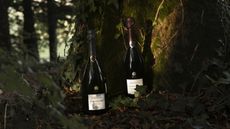 Why Bollinger’s La Grande Année 2015 champagne is worth celebrating
Why Bollinger’s La Grande Année 2015 champagne is worth celebratingChampagne Bollinger unveils La Grande Année 2015 and La Grande Année Rosé 2015, two outstanding cuvées from an exceptional year in wine-making
By Melina Keays Published
-
 Lexus installation explores time at Milan Design Week 2024
Lexus installation explores time at Milan Design Week 2024Lexus brought designer Hideki Yoshimoto’s ‘Beyond the Horizon’ to Milan’s Art Point, part of its ongoing series of collaborations with Fuorisalone
By Nargess Shahmanesh Banks Published
-
 Cult 1960s boutique Granny Takes A Trip gets a sustainable reboot
Cult 1960s boutique Granny Takes A Trip gets a sustainable rebootFounded on King’s Road in 1966, ‘radically creative’ fashion store Granny Takes A Trip is being reimagined for a new generation. Dal Chodha takes a closer look
By Dal Chodha Published
-
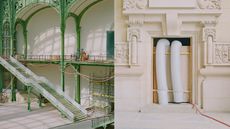 Grand Palais restoration in Paris through the lens of champion fencer Enzo Lefort
Grand Palais restoration in Paris through the lens of champion fencer Enzo LefortAs Paris’ Grand Palais prepares to reopen following extensive restoration by Chatillon Architectes, we visit the site with champion fencer and photographer Enzo Lefort, who documented the space ahead of the Olympic Games 2024
By Ellie Stathaki Published
-
 Modernist architecture: inspiration from across the globe
Modernist architecture: inspiration from across the globeModernist architecture has had a tremendous influence on today’s built environment, making these midcentury marvels some of the most closely studied 20th-century buildings; check back soon for new additions to our list
By Ellie Stathaki Published
-
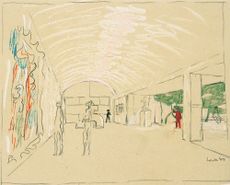 Louis Kahn's modernist mastermind celebrated through new collaborations
Louis Kahn's modernist mastermind celebrated through new collaborationsThe legacy of modernist architect Louis Kahn lives on to inspire a new generation, thanks to collaborations with family and fans
By Marina Cashdan Published
-
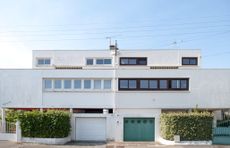 Royan Architecture Month showcases French modernism by the sea
Royan Architecture Month showcases French modernism by the seaRoyan Architecture Month 2024 launches in the French city, where many travel to see midcentury builds by the sea, from Notre Dame church to Palais des Congrès
By Stacy Suaya Published
-
 Dip into the Paris pools and swimming culture enriching the 2024 Olympic Games
Dip into the Paris pools and swimming culture enriching the 2024 Olympic GamesParis pools, in the Olympics and beyond, have inspired fun, wellness and a love of sports in the French capital
By Ellen Himelfarb Published
-
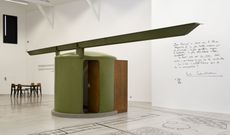 Jean Prouvé’s House of Better Days on show at Galerie Patrick Seguin in Paris
Jean Prouvé’s House of Better Days on show at Galerie Patrick Seguin in ParisThe Maison Les Jours Meilleurs, or House of Better Days, by Jean Prouvé is explored in a new show at Galerie Patrick Seguin in Paris
By Harriet Thorpe Published
-
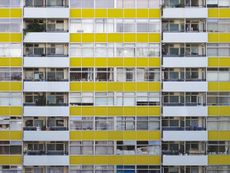 ‘London Estates’ surveys the architecture and influence of the capital’s council-built homes
‘London Estates’ surveys the architecture and influence of the capital’s council-built homes‘London Estates: Modernist Council Housing 1946-1981’, a new book by FUEL, is the perfect place to start for inspiration on how architecture can improve every sector of society
By Jonathan Bell Published
-
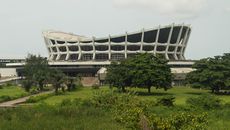 Afrobeats and modernism: how the concrete ‘ruins’ of Lagos become a stage
Afrobeats and modernism: how the concrete ‘ruins’ of Lagos become a stageWe explore the relationship between Afrobeats and modernism in Lagos, as the Nigerian capital’s concrete structures become a stage for the music genre
By Olorunfemi Adewuyi Published